
Timing, as we all know, is everything. Ensuring that you are launching a brand new, real-world connected vehicle testing facility in the US state of Georgia at exactly the right time is an incredibly involved process that has taken years of planning and thinking and re-planning and re-thinking.
One of the main tenets of this living lab is that members can come to the facility and test their innovative new potentially life-saving solutions, with the epithet of “everything connected to everything else” clear in the minds of all interested parties and with future physical collaborations between the members one of the foreseen by-products of this initiative.
Imagine, then, the incredulity of its founders that just two months after its launch in January 2020, spending time in an enclosed environment with other human beings had been rendered not just impossible but potentially life-threatening.
This is, however, exactly what happened to the Infrastructure Automotive Technology Laboratory (iATL), a private-sector-led initiative that is fully committed to enhancing safety on US roads by fast-tracking connected vehicle technology deployment.
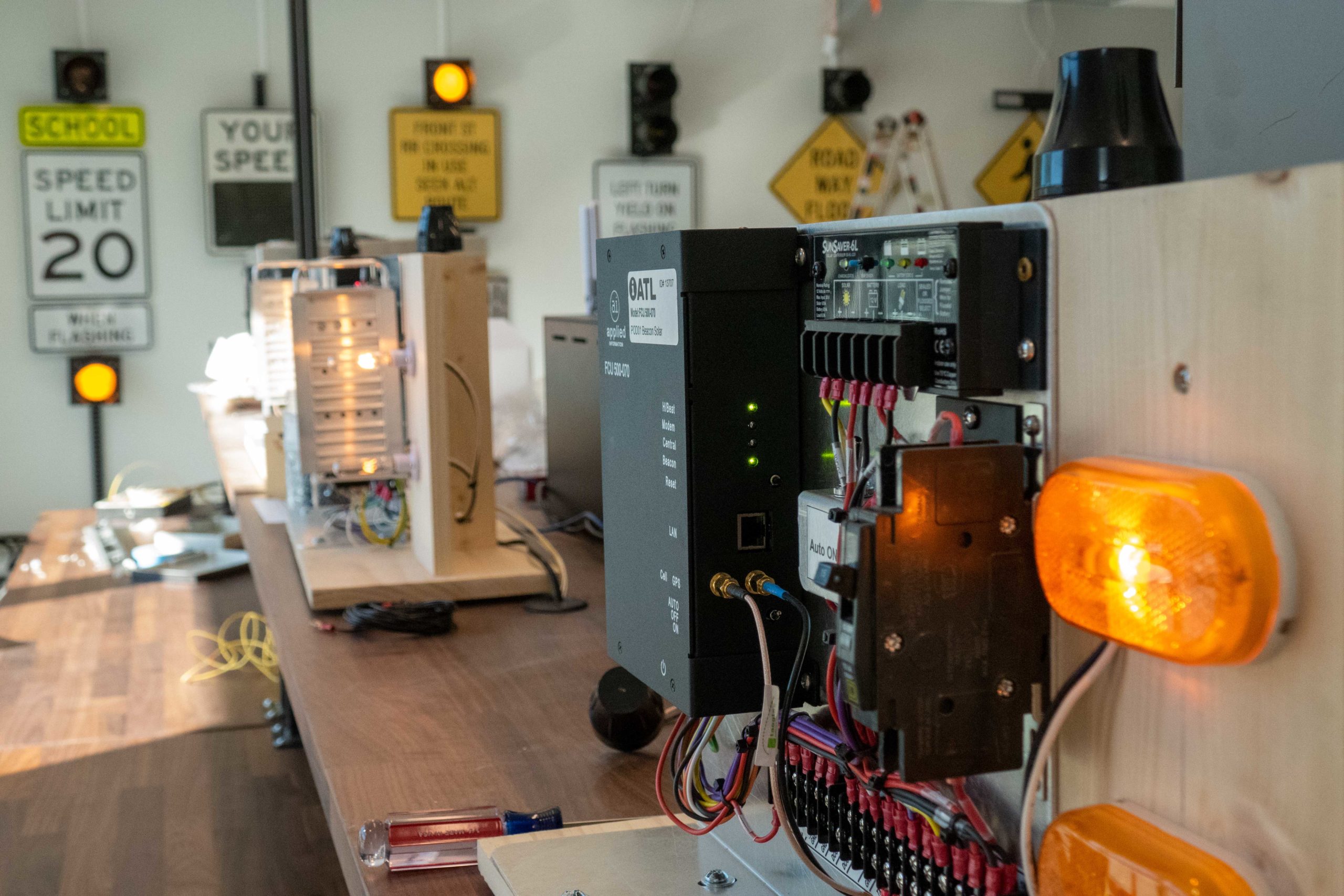
The iATL, based at founding partners’ Applied Information’s Alpharetta, GA headquarters, is the very definition of a living lab and is working to accelerate connected vehicle technology through industry collaboration to save lives, improve traffic, and reduce the environmental impact of transportation. It brings together a diverse array of industry sectors to develop practical, lab-controlled, real-world road safety applications, and central to its mission is the 46-member iATL Partner Alliance, a coalition of both public and private entities directly connected to the lab or supporting the advancement of connected vehicle technology. Among its impressive list of partners are Audi, AT&T, T-Mobile and ITS America – the iATL clearly means business and that business is reducing the horrific number of people that are killed and seriously injured on the US road network.
With its unique testing environment, iATL is a key hub for stakeholders dedicated to the future of connected vehicle applications and its inherent safety and mobility benefits.
To improve real-world C-V2X testing capabilities, the iATL operates a 4,400-square-foot lab serving as a dedicated engineering facility to test CV applications. The lab houses dozens of signs, signals, smart arrows, school zone beacons and other advanced traffic control equipment, making it a vital hub for testing CV technology across multiple platforms or devices.
With its focus on interoperability and less than four years after its most unfortunately timed launch, the iATL is now firmly established as one of the world’s leading connected vehicle testing facilities. ITS International spoke to its founder and five partners to discover how and why its rise to prominence has been so rapid after such an inauspicious start.
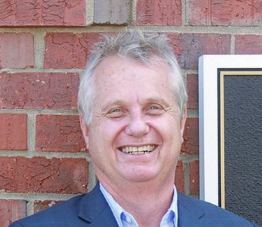
Bryan Mulligan, president, Applied Information & executive director and founder of the iATL
I'm a practical guy. My thinking was that it’s no good using a disused Second World War airfield to test connected vehicle technology. You've got to be out in the street. So now here we are, with 75 square miles of pedestrian crossings and traffic intersections and fire trucks and ambulances, school beacons and school buses and all in the real world. And we understand, being infrastructure guys, how to keep everybody safe. We're not being reckless – this is what I would call “applied risk” but we're exposing the automotive world to the real world.
Look at MCity up in Michigan. It’s great but it's a sterile track, it’s not the streets of Detroit. This was really the driving force behind iATL. You can call it ‘servant leadership’ if you like but we just chose to lead and to attract like-minded people around us.
Also, we didn't ask anybody's permission. We just went ahead and did it out of our own resources and the resources of the folks who donated their equipment and who want to collaborate with us. We’ve run some very successful events out in the streets of Alpharetta for the 5GAA [5G Automotive Association]. We make the point that competition stops at the door. Everybody's welcome. If we make this work the rising tide will lift all boats, and that's what the iATL Partnership Alliance is about.
Government innovation is an oxymoron. With other test labs the first problem that they've got to solve is funding, so they spend all their time writing grants. It's like a university. The government-led labs and the government-funded labs and the grant-funded labs are all beholden to whoever provides the funding and that that's not how innovation is born. Space-X is a great example: they weren't beholden to government funding, they were funded entirely by private sector capital. That’s been our focus - focus on the prize, focus on the problem. We're trying to make the world a better place.
If you bring people together and their opening words to each other aren’t “Can you send me some money”, then you’re onto something. There's an expression that I like to use which is ‘enlightened self-interest’. You put people together who've got self-interest, but they understand that there's a common good, suddenly all sorts of good things happen. This has been entirely organic, and that's the power of willing collaboration.
 Jim Misener, global V2X ecosystem lead, Qualcomm
Jim Misener, global V2X ecosystem lead, Qualcomm
Bryan Mulligan is such a passionate advocate for safety. The iATL is basically a focal point to bring together like-minded entities and this was attractive to us.
Although it clearly endeavours to be more than just a regional centre, the iATL brings together the forces of Georgia, and Georgia is leading in C-V2X initiative in the US. It made so much sense to us to become a member. As it was gelling in Bryan's mind, he was discussing this with me – we were one of the early partners but I had known about his plans and that it was going to happen since it was in the oven, so to speak.
Don’t forget that these were Covid times. We were thinking of how to advance the deployment of safety in North America, but there was a lot of excitement generated by Georgia institutions for C-V2X and there still is. Bryan was able to bring in ITS America (Qualcomm are members and I'm on the board) so it just seemed to be a combination of the right players at the right time with the right mission.
We choose our organisations very judiciously. They have to meet several criteria, some of which are very general, that have to be legitimate to really align with our mission. But from a C-V2X perspective Bryan’s mission is all about deployment as soon as possible with a focus on safety countermeasures. Even though I work in the automotive business unit, we understand that the automobile is an important part of the safety equation but it takes the infrastructure to really complete that equation. So it just made so much sense to us.
Qualcomm doesn’t have offices in Atlanta or the Southeast, so the connections afforded by iATL were beneficial. We have business relationships with various partners already, but it's really refreshing to, for example, talk to someone in the carrier mobile network operator industry who has the similar mission to you. In this forum we're able to converge our missions and ideas, and under the leadership of Bryan Mulligan you can use your influence in lots of different ways.
He’s influential because, quite simply, he gets stuff done. He’s a serial entrepreneur and it's great to see entrepreneurial zest applied to a connected vehicle living lab. Through his passion, the iATL has unique, interesting and very effective form of leadership.
If I can borrow one of Bryan’s phrases this is a coalition of the willing. One step at a time, one jurisdiction at a time, one local agency at a time – this is what differentiates iATL from some of these other organisations that also are meritorious from our perspective as they promote safety. The iATL promotes and understands V2X, so it all fits into this rich tapestry very nicely.

Brandan Branham, executive director & CTO and assistant city manager, Curiosity Lab and City of Peachtree Corners
There were three main reasons why we joined the iATL Partner Alliance. First of all, Curiosity Lab and the iATL are neighbours. They are located in Alpharetta, GA and we're in Peachtree Corners, so our proximity has definitely helped with the partnership. We created a living lab here in Peachtree Corners and the city invested in the infrastructure enhancements to further emerging technology deployment inside of a real world scenario. Connected vehicles were a very important part of this.
Secondly, we were doing some work ourselves in the CV arena with, among others, Qualcomm, so we had similar partners in that ecosystem. And then third, we both have the same mission: protect vulnerable road users and do that through the use of technology and enhance our transportation systems.
When we joined we initially wondered about the practicalities of several members working in the same arena, but once we got to the table and sat down and had the conversation, they were very complementary to one another. The iATL is heavily focused on the traffic signal, the transportation system, whereas Curiosity Lab is focused on the whole ecosystem of connected communities. This opened up some opportunities to facilitate new things here as well as take some back there, so it ended up being symbiotic in its nature.
What we get out of being a member of the iATL Partner Alliance is the conversations with other industry players. Here we’re sitting at the same table as Audi. We probably wouldn’t have that opportunity otherwise. These conversations really help us grow as Curiosity Lab and as the city because I also wear the hat of the chief technology officer for the city of Peachtree Corners. So having that exposure from a bigger community perspective is always helpful and has brought a lot of benefit to us.
They do a lot of work on the UU side of connected vehicles. So there's the traditional 5.9GHz, which is the dedicated band, and then there's the UU, which is used in the cellphone towers. That's really where we've seen the benefit of being a member of the iATL and working with them. For them, it gives an unfettered, semi-unregulated ability to deploy some of their newer technologies in our space.
Governments tend to be a little shy on implementing new technology, but we've created that environment in a city to allow this to really move forward and move forward quickly.
What can’t be ignored is the power of voice to the FCC [Federal Communications Commission] that being with the iATL affords you, to truly release the band for C-V2X. This will take all of us working together, continuing to petition the FCC. There's power in numbers so in five years, if we look back we’ll see that the Alliance helped the FCC set the rule and let it go. That would be a huge win for us and the industry, because then we're not operating under experimental licences anymore, we can fully deploy these connected vehicles, which, from our perspective, is a life-saving technology.
Another huge win would be to see this technology used for public transportation. If buses stay on schedule, they operate more efficiently, which in its own right has a sustainability element to it, because you're reducing emissions if they're not sitting at that red light.
 Whitney Nottage, executive vice president of operations, Q-Free America
Whitney Nottage, executive vice president of operations, Q-Free America
Q-Free is the newest member of the iATL Partner Alliance. We joined because it has expansive test facilities, and tonnes of technology partners that enable real-world testing of connected vehicle interoperability and applications.
Interoperability is crucial for the connected smart city, which requires opening a part of your technology to other products and organisations. The lab gives us a chance to work with third parties and even competitors, to ensure seamless and reliable communications between vehicle and device infrastructure to improve traffic management, reduce congestion, prevent collisions and save lives.
The partnership provides us access to collaborations and technologies to expand on our philosophy of providing brand-agnostic solutions. Access to the iATL’s robust partner network affords us an unprecedented opportunity to include real-world testing as part of our development lifecycle.
When you're creating a solution, without a lab like this, typically you have to go out and buy all the technologies and build your own lab. And then you're testing it in isolation, hoping it all works. It’s not until you get it into the real world that you see how everything we did in the lab translates to the real world.
The timing to join worked out well as we continue to work with customers in the region to develop, test, and implement technologies to improve connectivity and safety at the roadside. The collaborative space of the iATL Lab gives us a way to build on our commitments to customers. Being able to deliver real-world tested advancements in traffic safety and efficiency for our customers is paramount.
I think the first thing for us will be testing with various roadside units (RSUs) used to distribute safety warnings, traffic information, and navigation data to passing vehicles. Our connected vehicle software is widely deployed in the state of Georgia already, and they have a couple of different brands of RSUs, so we feel pretty confident that our solution can work regardless of hardware vendor. The Alliance has additional brands of RSUs we can test with to make sure our solution is truly vendor-agnostic, a unique opportunity provided through the iATL.
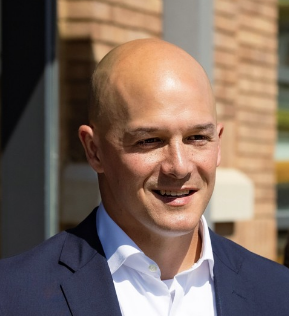 Forrest Temple, president, Temple
Forrest Temple, president, Temple
In the past, the industry has been kind of segmented by what controller line you're representing and what technologies you're selling. Bringing everybody together was a novel idea. Being a part of that helps us speak to people, collaborate with companies that we haven't ever collaborated with before and go after a common goal.
When we were first introduced to it, we saw it's not just a little lab - it's actually a place where everybody talks about collaborating and innovation. But it’s much more than that - it's not just what's in the lab, it's also the environment and the 125 intersections around the City of Alpharetta where you can actually see how it all works.
We’ve driven customers through a 15-intersection loop in Alpharetta where we can display Applied Information’s smartphone app, TravelSafely. It is always shocking to the customer to see and hear signal phase and timing and safety messages broadcast to the driver. Seeing first-hand as a city employee or a decision-maker for a government agency how the industry is changing right now is very exciting and this change is not slowing down, it’s just gaining momentum.
A lot of our customers are rural, they're from the south [of the US]. They hear about connected vehicles, but they have no idea how important that is to them. This is a pivotal time because in the next decade it's going to be normal to see your vehicle just take that information to your dashboard. It takes industry professionals witnessing and improving upon it and communicating that to folks like the 5GAA and the auto manufacturers to really buy into.
The Alliance needs great ideas, great innovation, and great manufacturing, but you also need great ability to commission and deploy projects, and fully support them after they're done. So when we are part of this Alliance, when we start hearing these ideas, our thoughts are ‘OK that’s great, but what does that mean for the customer? What does that mean for people who are investing?’
I think the Alliance benefits by having us on the team just to have a member that’s not purely a technology company. We're a sales relationship business, so with that focus always on the end user, we work to paint the vision of what the customer can get out of their technology. When you help separate funds from an agency, somebody needs to be looking after the customer. Somebody needs to look after the tax dollars that are spent and making sure that they're embraced and supported fully by the customer.
We benefit from being in the iATL Partner Alliance because we get sneak peeks of where the industry is going. We have sneak peeks of what's being developed. A lot of things are developed in a vacuum but that’s not the case here. It’s a bigger calling. It creates a greater bond that you have with other companies.
Look at how connected vehicles have changed in the last five years – this rate of change isn’t going to slow down. The goal here is to continue to be invested in thinking about the technology. For us, you can see where the CV sector is headed with the Alliance - if we weren't part of the Alliance, we wouldn't see it incrementally, we'd see it when it's too late. We are very keen to continue to have very close relationships, like we do with Applied Information and several others. I’ll say it again: there’s a bond. It's a community and an unashamed pride in what you're doing.
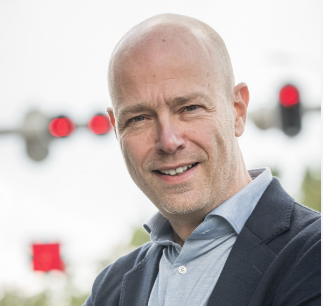 Menno Malta, Founder and CEO, Monotch
Menno Malta, Founder and CEO, Monotch
We have a lot of experience in connecting all actors in the smart mobility industry into one platform, our Traffic Live Exchange (TLEX) system. There are many use cases with our TLEX implementations for which we gladly share our knowledge in this Alliance. The focus not only on safety and the improvement of traffic but also on commerce, in the light of our American expansion, feels like a solid match for Monotch.
One of the reasons for joining is that we wanted to become active in the US market and this is also how we came across the initiative in the first place. The iATL is aligned very well with the way we look at ITS and connected, digital transport and connected mobility as it's an ecosystem environment. We bring a lot of experience from Europe and hopefully, in the future, maybe others will follow us. We can promote this initiative to some of the other European players.
This is all about how to translate an ecosystem that works on digital infrastructure and connected mobility into something real on a large scale. That is something that we really have a lot of expertise in. Part of the problem we are looking to solve is lack of interoperability. When we look at the ITS industry as a whole, we think it can benefit from a more modern approach. There is a limited number of players that have been around for a long time and a lot of them come from the hardware industry, and they still very much have a ‘hardware mindset’.
There was not, therefore, a pressing need for innovation from the perspective of the suppliers in the market and I think this is a big reason why it hasn’t quite made the progress that was predicted and expected. Movement towards interoperability of solutions is needed to really change the market and I'm positive that is starting to happen right now. Initiatives such as the iATL are part of that change as it unites the industry with a certain goal. It will contribute towards overcoming one of the important hurdles in the market.
The partners in the Alliance are part of the audience, as are the authorities. You don’t need to hire expensive consultants. You can spend that budget on actual real-world deployments and achieve some real results.
We have three desired takeaways from our iATL partnership. The first is being able to connect to the other members, so not just networking. It’s also really an exchange of knowledge. Another takeaway is visibility is also good for us in the US, but number three is really to experiment with how to combine different solutions with different partners.
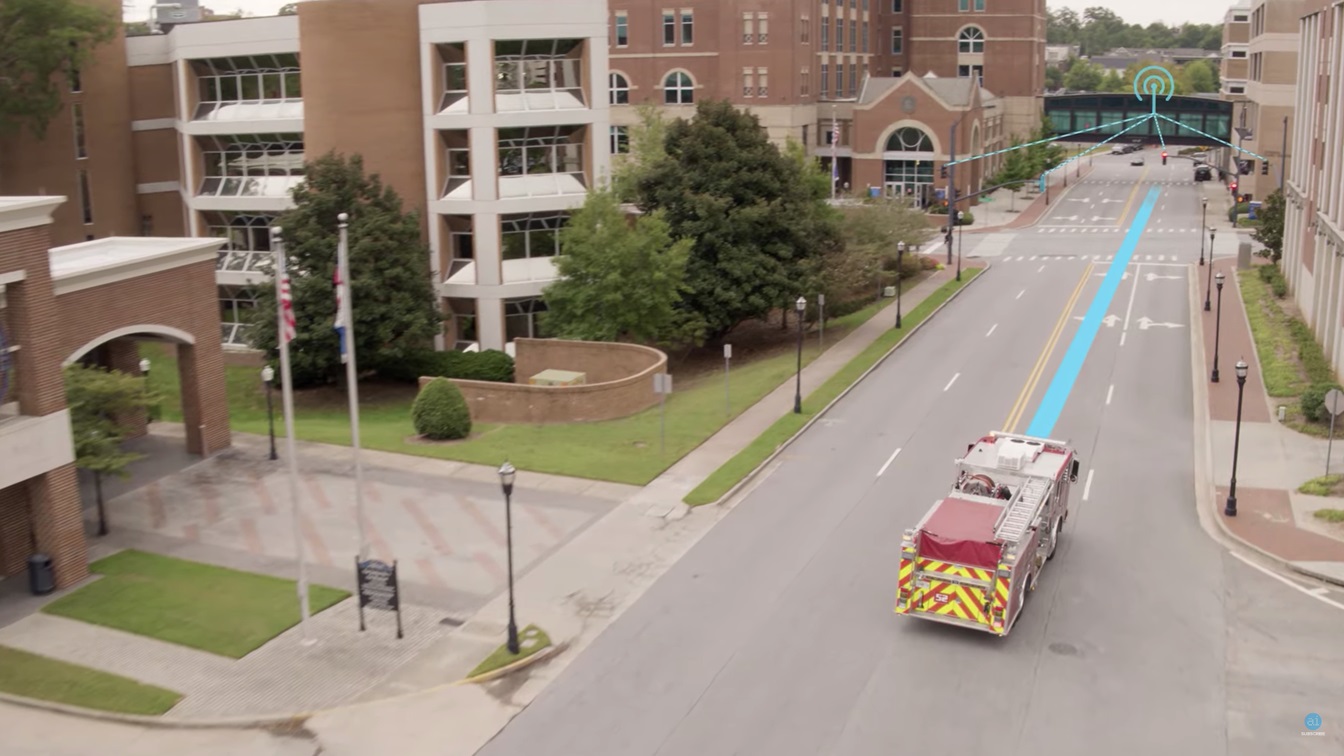
Conclusion
As founder Bryan Mulligan is fond of saying, the iATL Partner Alliance is the very model of a coalition of the willing. If the future really is now, and ‘imagine, create and test’ is a mantra that can propel the CV sector into a highly collaborative, life-saving era, that will be an impressive return for “a group of friends committed to trying to make world a better place”.











